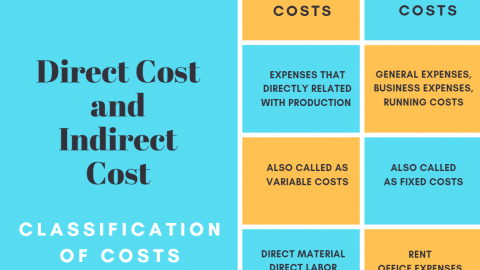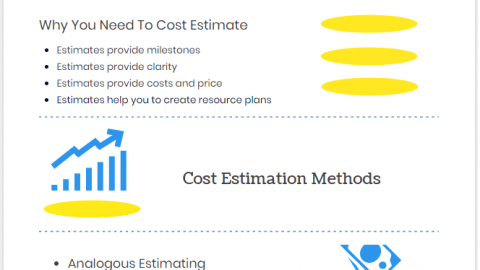Cost Variance (CV) in Earned Value Management
Performance measurement is an important task in project management. In order to manage and complete a project from initiation to close up successfully, project managers employ some tools and techniques for performance measurement. One of the most effective tools used for this purpose is the Earned Value Analysis (EVA). Basically, the Earned Value Analysis (EVA) allows the project manager to measure the amount of work actually performed on a project in a given period. There are some outputs of the Earned Value Management System such as Schedule Performance Index (SPI), Cost Performance Index (CPI), Schedule Variance (SV), and Cost Variance (CV). In this article, we will review the Cost Variance in Earned Value Management and analyze its formula with examples.
Table of Contents
What is Earned Value Analysis (EVA)?
Stakeholders, funders, and the board of directors often wonder about how the project is performing. They ask the following questions to understand the current status;
- How is our project’s current performance?
- Is the project under or over budget?
- Is the current performance enough to complete the project on time?
This is where Earned Value Analysis (EVA) comes into play. For better understanding, let’s analyze the following simple example below.
EVA Example
Assume that your company has undertaken a project to erect ten light poles in one year. You created a work schedule and according to your plan, you will spend 50 man-hours to erect each light pole. Six months have passed and four of the light poles are erected. When you have checked the performance of the project, realized that the erection team has spent 300 man-hours to erect four light poles as of today.
Is your project behind the schedule?
Basically, schedule performance is lower than planned because you should be erected at least five poles in six months considering the project duration.
What about productivity?
You planned to spend 50 man-hours for one light pole. For four light poles, the planned man-hour should be 4 x 50 = 200 man-hours. However, the erection team spent 300 man-hours for the erection of four light poles.
So, your productivity is less than planned because you spent more manpower to erect fewer light poles.
This simple example shows that Earned Value Analysis uses parameters to analyze a project’s both schedule and cost performance. Schedule Performance Index (SPI), Cost Performance Index (CPI), Schedule Variance (SV), and Cost Variance (CV) are key performance indicators of EVA.
Cost Variance (CV) in Earned Value Management
Cost Variance (CV) measures the cost performance of a project. It can be calculated as the difference between the earned value and the actual cost. Cost Variance (CV) is one of the essential outputs of Earned Value Management which alerts the project management teams if the project is under or over budget.
Cost Variance (CV) Formula
Cost Variance Formula: CV = EV – AC
SV = Cost Variance
EV = Earned Value
AC = Actual Cost
Explanation of Results
If the CV is positive, the project is under budget
If the CV is negative, the project is over budget.
If the CV is zero, the project is on budget.
For better understanding, let’s analyze the below examples.
Cost Variance Examples
Evaluating the financial performance of a project is critical for decision-making. Project teams compare the initial project budget that was set before with the actual cost. If budgeted and actual costs are close to each other, everything will be good. However, this is very difficult to achieve. Below Cost Variance Examples help you to track your project’s financial position.
Example 1
Assume that we have a construction project to be completed in 15 months and the budget of the project is 450,000 USD. 3 months have passed and 120,000 USD has been spent. However, only 15% of the work has been completed.
Let’s calculate the Cost Variance (CV) of the project.
Earned Value (EV) = %15 x 450,000 USD = 67,500 USD
Actual Cost (AC) = 120,000 USD
Cost Variance Formula: CV = Earned Value – Actual Cost
CV = EV – AC = 67,500 – 120,000 = – 52,500 USD
In this example, the project’s Cost Variance (CV) is -52,500 USD, this shows that we are over budget. Therefore, we should analyze this problem with the key stakeholders and take corrective actions. In order to make efficient cost control, we need to check resource productivity correctly.
Example 2
We are managing a dam construction project. The project is expected to be completed in 20 months with a cost of 10,000,000 USD per month. After 5 months, the project is 20% completed 60,000,000 USD has been spent.
Earned Value (EV) = %20 x 200,000,000 USD = 40,000,000 USD
Actual Cost (AC) = 60,000,000 USD
CV = Earned Value – Actual Cost
CV = EV – AC = 40,000,000 – 60,000,000 = – 20,000,000 USD
The project’s CV is -20,000,000 USD, and we are over budget.
Example 3
Assume that we have a bridge project to be completed in 10 months and the budgeted cost of the project is 100,000,000 USD. 6 months have passed and 40,000,000 USD has been spent. However, only 30% of the work has been completed.
Let’s calculate the Cost Variance (CV) of the project.
Earned Value (EV) = %30 x 100,000,000 USD = 30,000,000 USD
Actual Cost (AC) = 40,000,000 USD
CV = Earned Value – Actual Cost
CV = EV – AC = 30,000,000 – 40,000,000 = – 10,000,000 USD
The project is over budget. We spent more money but we completed less work.
Summary
Cost Variance (CV) is an effective tool to measure the project’s cost performance. If the Cost Variance (CV) is negative we are over budget and corrective action should be taken to reach the targets. If the Cost Variance (CV) is positive we can say that we are under budget and our project’s cost performance is well.
All the project managers would like to complete their projects within the approved budget. Cost deviations and damages are bad news for clients, stakeholders, and project managers.
Please note that Earned Value Analysis (EVA) is a significant concept for the PMP Certification Exam. Therefore you must understand the Earned Value Management Concept and its key aspects in order to pass the exam.
If you want to add or share your experiences related to Earned Value Management, you can use the comments box below.
External Reference
See Also

Vice President, İntelligent Design & Consultancy Ltd
Over 12 years of global & rich experience in Portfolio & Program Delivery Management in leading & managing IT Governance, PMO, IT Portfolio/Program, IT Products, IT service delivery management, Budget Management, and more.









